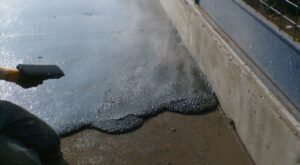What is the difference between warm and inverted roofs?
The difference between warm roof and an inverted roofs is in the positioning of the roofing components. An inverted roof is effective as an upside-down warm roof. The waterproofing layer
The difference between warm roof and an inverted roofs is in the positioning of the roofing components. An inverted roof is effective as an upside-down warm roof. The waterproofing layer
BS 6229:2018 describes best practise for designing, constructing, and maintaining roofs with a flat or curved surface. It is limited to roofs with a pitch no greater than 10 degrees
To achieve sustainability of a single ply roof covering, the specified material needs to tick so many boxes. The first question to ask is what the material is made of,
Torch-on roofing is named due to using an open flame torch for the application of the reinforced bitumen membrane. Torch-on reinforced bitumen membranes are used predominantly for low slope and
The definition of a flat roof is guided by the pitch or the degree to which its surface deviates from the horizontal. The roof is considered flat if the pitch
EPDM, or ethylene propylene diene monomer membrane, is one of the most popular single-ply membranes for residential and commercial low slope and flat roof systems. EPDM is essentially a synthetic
There have been many concerns over the years about the application of torch-on systems and the use of naked flame systems in the bituminous roofing industry. Between 2013-2014, on average
With over 60% of all single ply roofs in the UK being mechanically fixed it’s critical that the correct fixings are used for the individual application. After all, these are

Correct specification of screed for roofing, flooring or car park applications may seem like a minute detail, but it can have significant implications on building performance. Whilst cementitious screeds have